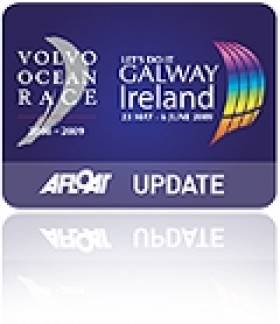Displaying items by tag: Frankie
Sea Sickness Rules Irish Sailor Out of World Race
Galway sailor Frankie Leonard is stepping down as Team Sanya's media crew-member following a bout of seasickness in the recent 2,000-mile qualifying passage for the Volvo Ocean Race (VOR).
The team Sanya entry is a Chinese-Irish entry in the race that starts in November from Alicante. Tourism body Discover Ireland are backing the boat and making up 25% of its estimated €10 milion campaign costs. Leonard was the only Irish crew member on the boat that is under Kiwi skipper Mike Sanderson, a former race winner. The boat, one of seven entries, is expected at the race finish in Gawlay next July.
A statement yesterday described the development as a "cruel blow" to both Leonard and the campaign and paid tribute to the cameraman's commitment and contribution.
Much of the MCM role is dependent on being below decks for extended periods, either working in the tight confines or at the galley preparing the freeze-dried food for the crew and is a mandatory position within every team. The team statement is below.
23rd Sept 2011
Mike Sanderson, Team Sanya CEO and Skipper, announced yesterday with regret a change to the media crew member role following a decision to release Frankie Leonard from his duties. Frankie, who has been engaged with the team since the beginning of the project, unfortunately has suffered from seasickness, which affects a great many sailors.
Mike Sanderson commented:
" Frankie has all of the ideal qualities to fit this role - superb teamwork and communication skills, a dynamic approach to his film and photo work combined with a great sense of humour and a pleasure to be around. However, this race is all about performance on the water and Frankie's suffering from seasickness is a cruel blow both to the team and to him. As anyone who been struck down by seasickness knows well, it can leave you incapable of functioning to your normal levels. We have 37,000 miles of ocean to cover and sadly that left me with no option in this matter.
Frankie has made a great contribution to the team and made many new friends in the time he has been here and we will be keeping in touch for sure."
Frankie Leonard added his thoughts:
"It has been an amazing opportunity to be a part of this special team and a great experience both personally and professionally. I am happy to say that I leave with no regrets. It is always unfortunate when things come to an end but rather than dwell on negatives I prefer to accentuate positives. Team Sanya has had one of the highest media outputs of all the teams with almost double some teams output for video, blogs and photos. We have steadily built up good relationships with the media, our sponsors and Volvo Ocean Race HQ, which can only be a positive for the team. I know that the skills, knowledge and experience I have acquired will stand to me as I now go in search of new projects. I am glad to count Mike and my teammates as good friends now and I wish Team Sanya a safe, happy and fast race."






























































